- Home
- Stuart Woods
Blue Water, Green Skipper: A Memoir of Sailing Alone Across the Atlantic Page 4
Blue Water, Green Skipper: A Memoir of Sailing Alone Across the Atlantic Read online
Page 4
“Let me show you a place we almost took when we came to Cork,” he said. “It didn’t have quite enough room for us, since we’re expecting a baby in the spring.”
We drove around to Coolmore, as the house was called, and stopped for a few minutes. Ron’s flat was four or five enormous rooms on the south side of the house, and his working space was on the large stair landing. We looked at the original drawings of Golden Shamrock and compared them to the production version. The new boat was to have a slightly higher and longer coach roof and a more comfortable interior, but the hull shape was to be identical to that of the prototype.
We met the owner of Coolmore, who looked very much the Master of the Hounds, which, it turned out, he was. He gave us the key to the place Ron wanted to show me, and we drove along a rutted, very muddy road beside the river until we came to a small clearing, where we parked the car. We walked a few yards and came to a lovely old stone cottage right on the banks of the river at a bend called Drake’s Pool, so named because Sir Francis Drake is supposed to have eluded the Spanish by hiding there. Because of the double bend in the river they thought it was petering out and went back to search for him in Cork Harbor. The Owenboy River has scoured out a deep pool there, and it is a perfect yacht anchorage. There was an empty mooring directly in front of the cottage. We looked inside: a large living room, a large bedroom, a small bedroom, a kitchen, and a bath. The place had been newly plumbed and wired for electricity. I felt a bit giddy; things had begun to move very fast. I looked again at the mooring as we left. It came with the cottage, Ron said.
At the boatyard we encountered the skepticism from its managing director, Barry Burke, that I had half expected from Ron. He wasn’t sure that the boat was suitable for a transatlantic passage. Ron said that he’d crossed the Tasman Sea in a similar-size boat. I pointed out that the OSTAR in ’72 had been done by David Blagden in a nineteen-foot Hunter and asked if he didn’t think his boat would be as strong as a Hunter 19. Ron said he’d give the boat more of a bashing in the 625-mile Fastnet Race than I’d give it in a transatlantic. We talked about making changes to the standard design. Burke was reluctant to slow his production line down with modifications to a standard boat. Pull it off the line, said Ron, and put a couple of men on it. Burke wasn’t sure. He asked when I would want the boat. Easter, I said. Impossible, he replied. He’d already sold nine boats. The earliest delivery date would be July 1. I did some quick mental calculations. The OSTAR rules required a five-hundred-mile qualifying single-handed cruise no later than three months before the race. I figured that if the boat were ready on July 1 I could just about get her and myself ready for a qualifying cruise before the end of the summer, if I sailed on as many other boats as I could in the spring and early summer. We made a list of the possible modifications to the boat, and Barry promised to let me have an estimate for them. I had hoped that he might agree to some discount, since the boat would undoubtedly receive a lot of attention if it were entered in the OSTAR, and I hoped to do a book about the experience; that would give it even more publicity. Barry didn’t seem inclined to give a discount. We left it at that, and I invited Ron to have dinner with me, where we continued our discussion of the yacht and the race. “What would you change about the boat if you were not building to the Rule?” I asked. (The International Offshore Rule, a rating system so complex that it is understood only by computers, which, in turn, explain it to yacht designers and yachting magazines, which publish incomprehensible articles about it.)
Ron looked thoughtful. “Maybe raise the freeboard a little,” he said. The freeboard is the amount of hull between the deck and the waterline, and, so my reading had told me, was a principal factor in seaworthiness.
“Suppose,” I said, “we put a two-inch slice of teak between the hull and the deck? That would raise the freeboard and also give me another two inches of headroom in the cabin.” We were talking about how to change the yacht slightly to make it a fast cruiser instead of a flat-out racing boat. We had already talked about sawing the racing-type cockpit out of the glass-fiber molded deck and building a more conventional cruising cockpit with seats and lockers.
“I think that’s a rather intelligent solution,” he replied. I glowed at the thought of having contributed an original idea. We talked about what might be squeezed into the interior. Southcoast had hired a Swedish designer to do the interior, and I was considering doing my own layout with Ron’s help, since my requirements were different from the man who might race the boat on weekends, then take an occasional family cruise. I wanted no bunks forward in the boat. I wanted a large, empty forepeak for sail stowage and nothing else. It seemed to me that all the other boats I had seen with bunks forward always had the forepeak filled with wet sails anyway, so why have bunks?
Our evening was drawing to a close, and over coffee we had returned to the subject of a novice attempting to learn enough in a short time to sail the race successfully. I outlined what I thought I had to do in the remaining time. Up until now everything had been a big maybe, but I had been encouraged by my practically daylong talk with Ron. Finally, I said, “I think I can do it.” Ron said, “I think you can do it, too. I think it’s an exciting project, and I’d like to be involved in it.”
I think at that moment the basic decision was made.
Back at Lough Cutra there was a letter waiting from the OSTAR race committee. They had decided to accept Ewan Southby-Tailyour’s Hurley 24 entry because of his performance in the Round Britain Race but would accept no other Hurley 24s. Had the boat been of that size but of a more experimental nature, they might have considered it more favorably. I didn’t understand that last part, but anyway, my mind was now galloping off on another tack and the Shamrock had replaced the Hurley in my thinking.
Now I began, with no credentials whatever, to become a yacht designer, at least on the inside of the yacht. I pored over the layouts of dozens of other yachts, picking the features I liked best. First of all, since I didn’t want berths in the forecabin, that could be smaller and the saloon and toilet areas correspondingly larger. Then I crammed into the space available every feature I had heard about, read about, or imagined, and, to my astonishment, it all seemed to fit. A letter arrived from Barry Burke, with an estimate for fitting a skeg, rebuilding the cockpit, raising the decks with my teak sandwich idea, and building a custom interior to my specifications. It came to £1,600 above the cost of the standard boat. This was daunting, but maybe it could be lowered a bit by negotiation.
I had a telephone conversation with John McWilliam, the Crosshaven sailmaker who had clothed Golden Apple and Golden Shamrock. He had been out of town during my visit to Cork, but he had since talked with Ron and was enthusiastic about the project. We talked about a possible sail plan, and he sent an estimate. Another £1,600 or so was added to the budget.
About this time I felt enough committed to the project to begin to let my friends in Galway know what I was thinking. A friend from Dublin came down to Lough Cutra for the weekend, and I invited Harry McMahon and his wife to join us for dinner. At some point during the evening I mentioned, as casually as possible, that I was thinking of buying a Ron Holland half-tonner. The last boat I had mentioned to Harry had been the Hurley, and I hadn’t mentioned any plans for it beyond some coastal cruising. “What would you do with a half-tonner in Galway?” he asked.
I took a deep breath. “I’m thinking of sailing it in the Observer Single-handed Transatlantic Race,” I said. Harry looked stunned; his wife burst out laughing. That was to be fairly typical of the reactions of people who knew me as a Mirror helmsman in Galway. I would just have to get used to it.
In early December I went back to see Ron in Cork. He looked at my sketch of the interior and explained, as patiently as he could, that this would not fit, because the sides of the boat did not go straight down but curved inward. On a cruising boat with fuller “sections” it might be possible, but not on a hull designed for racing. Together we drew up a compromise of what might be possi
ble. He did, however, agree with my idea of pushing the saloon bulkhead (wall) forward by making the forecabin smaller. Ron pulled out the drawings of a three-quarter-tonner he had designed for production in glass fiber, called the Quest 32. The company that was to manufacture it had gone under. We all agreed that it was a great pity that it would not now be built. Ron was at a stage of his career when he needed several boats in series production, just about the only way a yacht designer can make any real money.
Ron Holland was born and grew up in New Zealand, sailing from an early age. After secondary school he served an apprenticeship in boat building and, as a part of that, took some drafting and design courses. He then went to the United States and worked in California for a well-known designer, Gary Mull, and later, in Florida, for Charley Morgan of Morgan Yachts. He met the sailing-oriented family of Carlins there and married their daughter Laurel. In 1973, sailing his own boat, he won the world quarter-ton championships. The boat was called Eyghtene (after the Australian pronunciation of “eighteen”). After the world championships Ron was living aboard the little twenty-four-footer in the Hamble River in England when he was approached by a young Cork businessman about designing a one-tonner. Ron and Laurel came to Cork to talk about it, fell in love with Ireland, and stayed. Golden Apple performed brilliantly but erratically in the world one-ton championships in 1974, but she was obviously the fastest boat there and caught the attention of everybody, including the yachting press, and Ron’s reputation soared.
Back in Cork, Southcoast Boatyard, which had built Golden Apple, asked him to design a half-tonner to be built in time for the world half-ton championships at La Rochelle, in France. The boat, the original Golden Shamrock, was rushed to completion and arrived in La Rochelle barely in time for the first race. Because of a stretching of rigging which had occurred on the passage to France, and the lack of time to replace it, Shamrock was dismasted in the first race. Somehow, another mast was obtained immediately, and the crew stayed up all night rigging the boat. After that, she performed spectacularly, even in survival conditions, and the decision was made to put the design into series production in glass fiber. Now Ron had another one-off design, a two-tonner intended for the Irish Admiral’s Cup team, and the biggest boat he had yet designed. This, he hoped, would be as important a boat as Golden Apple, but he still wanted more designs in series production. The dying of the Quest 32 was a blow.
In Cork I also met John McWilliam, the sailmaker, and had another talk with Barry Burke at Southcoast. I also had a talk with Ron’s landlord, and told him I was very interested in the cottage. He seemed amenable to having me there.
A few days later, as my Aer Lingus flight took off from Shannon Airport, headed for New York, then Georgia and the Christmas holidays, a broad plan had come together for the project: move to Cork in February, study navigation all winter and sail during the spring on any boat whose skipper would have me; the boat would start building May 1 and be launched July 1; then sail her intensively, going out to southwest France and northwest Spain or perhaps even the Azores with friends, then sail back to Crosshaven, single-handed, for my qualifying cruise. (I wanted to sail more than the minimum five hundred miles, hoping that a longer qualifying cruise would count with the race committee against my inexperience.)
The cottage would have, within a five-mile radius, the boatyard, the designer, and the sailmaker. Both Ron and John McWilliam had promised me as much time as they could spare in tuning the boat and helping me to learn to sail her. The only big question mark was the money, and that would be resolved, one way or the other, when I arrived in the States.
It seemed a very neat program. I could only hope that, in my ignorance, I had not made it too neat, had not failed to take some hugely important factor into account which, when it emerged, would wreck the whole project. If my own funds wouldn’t cover the cost, then there was the possibility of commercial sponsorship. I felt that if I had to I could probably do a better job than most in attracting commercial attention, since I had spent all of my working life in advertising, dealing on a daily basis with the sort of people I would have to approach.
The novel would have to wait a couple of years, but then, a novel can always wait, as any novelist can tell you.
The project was all there, in outline; I could do nothing more until January, except think about it. And until January I would think about nothing else.
Seven
Things Begin to Gel
Manchester, Georgia, is a town of about six thousand people, located about seventy miles south of Atlanta, the state capital. It is, perhaps, two hundred fifty miles from the nearest body of salt water, and the populace is not made up of sailing enthusiasts. A boat is something you row or propel with an outboard motor and is used in the catching of largemouth bass and catfish. To my mother, who is not interested in fishing, boats mean even less.
Dot, which is short for Dorothy and is what I have called her ever since I learned to talk, did not quite seem to get it when I explained to her what I planned to do. I spread out the plans for the boat and explained it all again. Still, I don’t think the penny dropped until a few days later. We were sitting in her car in a supermarket parking lot, about to drive home with the groceries, when she asked suddenly, “Are you really going to do this?”
“Do what?” I asked. We had not discussed the subject since the day before.
“Sail that little boat across the Atlantic Ocean by yourself.”
“Yes.”
Gene Spain, our family life insurance man, happened to be strolling through the parking lot at that moment. Dot rolled down the car window. “Gene, I want you to come by the house,” she said. “I want to talk to you about some insurance.” Gene forgot about his grocery shopping.
A few minutes later the two of them had worked out the details of a fairly hefty policy on my life, over my strenuous protests. “What do I need with insurance?” They ignored me.
“Do you want double indemnity?” asked Gene. “There’s only a small additional premium.”
“How much is treble indemnity?” asked my mother.
After that she seemed resigned to the idea. She learned long ago that it is difficult to talk me out of something I’m excited about. We met with the family attorney to sort out my grandfather’s estate, and I discovered to my astonishment that my estimate of what he had left me was short by half. Now I could afford the Shamrock and all the necessary equipment.
I had to cut my stay short by a few days in order to get to London in time for the tail end of the London Boat Show. I stopped off in New York for a day and managed to see half a dozen old friends, then flew to Shannon. Harry McMahon met me the next day at Lough Cutra, and we drove to Cork to catch the ferry to England. But first I had two things to accomplish in Cork.
First, I went to Southcoast Boatyard and, after some discussion, worked out a deal with Barry Burke: I would buy the standard boat at the full price, then the boatyard would carry out any alterations I wanted and maintain the boat until the start of the race at cost for materials and at cost plus ten percent for labor. The boatyard would also obtain any extra gear I required at trade prices. We signed the contract; Barry gave me a letter outlining the alteration and maintenance and equipment agreement, and I gave him a £500 deposit. We agreed on half the remaining price being paid at the time of molding, May 1, and the remainder on launching, July 1. Harry witnessed the contract. I was delighted with the arrangement and felt it was a good one for both of us. Barry seemed to think so, too.
Next, I called at Coolmore, to finalize arrangements about the cottage. By noon the next day we were at the London Boat Show.
We were like Babes in Toyland. Galway had no well-equipped chandleries, and Dublin, at that time, was not much better. When we wanted a piece of equipment a complicated mail-order procedure was involved, and often a battle with the transport services and customs. Now, spread before us, were two huge floors packed with everything anyone could possibly want for a boat, from the smallest c
leat to the tallest mast. There were only two and a half days left of the show, and I had to buy or at least research virtually every piece of equipment that would be needed for my yacht. I bought a sextant, instruments, a hand bearing compass, a VHF radio-telephone, clothing, a wet suit, books, and much else from a long list. I carefully researched life rafts and inflatable dinghies, emergency radio transmitters, self-steering, and electronics. Whenever possible I approached manufacturers about possible discounts on equipment.
On my return there were still one or two things to do before the move to Cork. I talked to some of the cruising people in the club, and we agreed to ask Len Breewood to come up to Galway for three weekends during the winter to teach the Yachtmaster’s Offshore navigation course. Len agreed to come for one weekend a month starting in February.
The other thing was to talk with Commander Bill King. Bill King is a retired Royal Navy submarine commander, in fact, the only submarine commander in any navy, he believes, who started World War II in command of a submarine and who was still alive at the end of it all. He had one hell of a war and has written about it in his own excellent book, Adventure in Depth. After the war, annoyed by the Royal Navy’s recalcitrance in adopting modern methods, he spent some years in ocean racing and sailing his own boat, then went to farm in County Galway and remained there in contentment with his wife, the writer Anita Leslie, until the late 1960s. Then he began planning a long-held dream to sail around the world, single-handed, nonstop. The Sunday Times, hearing about this, offered a £5,000 prize and a trophy, the Golden Globe, for the first man to complete the voyage. Bill’s boat, designed by Angus Primrose, partner of Bill’s wartime and postwar ocean-racing friend, the legendary John Illingworth, and by Colonel “Blondie” Hasler, who designed the Chinese Junk rig, was named Galway Blazer II. Bill set off alone, opposing Robin Knox-Johnston, Bernard Moitessier, and others, to race around the world, alone, without stopping.

 Beverly Hills Dead
Beverly Hills Dead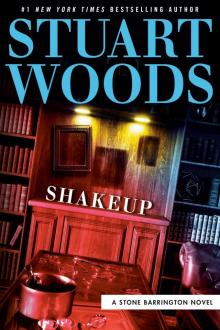 Shakeup
Shakeup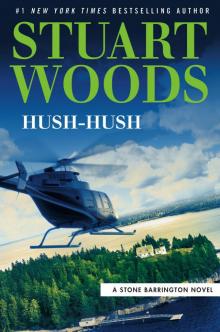 Hush-Hush
Hush-Hush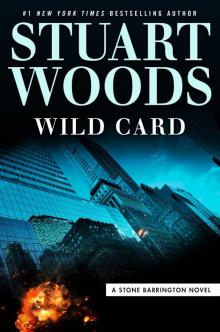 Wild Card
Wild Card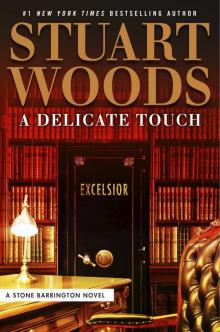 A Delicate Touch
A Delicate Touch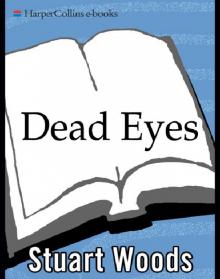 Dead Eyes
Dead Eyes Stealth
Stealth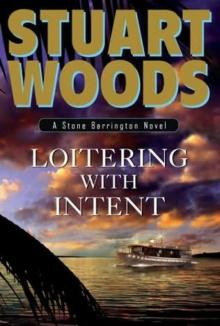 Loitering With Intent
Loitering With Intent Grass Roots
Grass Roots Scandalous Behavior
Scandalous Behavior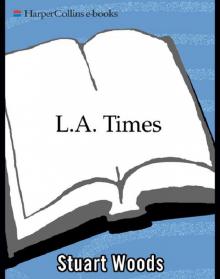 L.A. Times
L.A. Times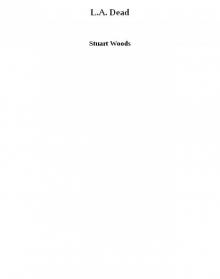 L.A. Dead
L.A. Dead Class Act
Class Act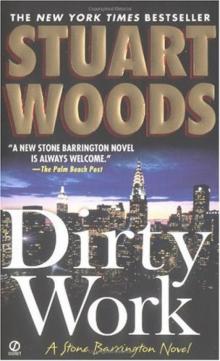 Dirty Work sb-9
Dirty Work sb-9 Bombshell
Bombshell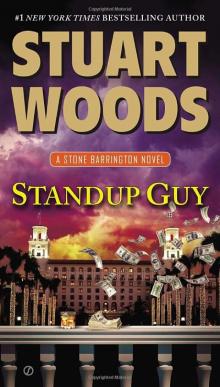 Standup Guy
Standup Guy Quick & Dirty
Quick & Dirty Stuart Woods Holly Barker Collection
Stuart Woods Holly Barker Collection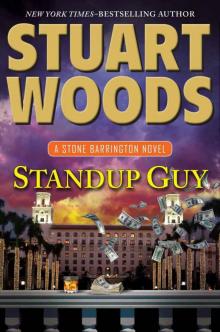 Standup Guy (Stone Barrington)
Standup Guy (Stone Barrington) Capital Crimes
Capital Crimes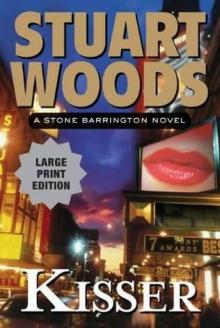 Kisser
Kisser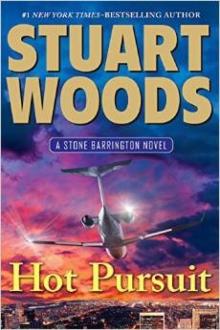 Hot Pursuit
Hot Pursuit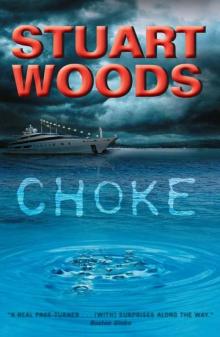 Choke
Choke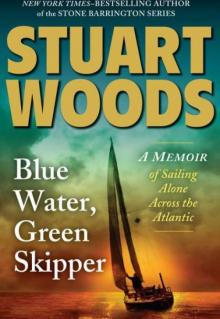 Blue Water, Green Skipper: A Memoir of Sailing Alone Across the Atlantic
Blue Water, Green Skipper: A Memoir of Sailing Alone Across the Atlantic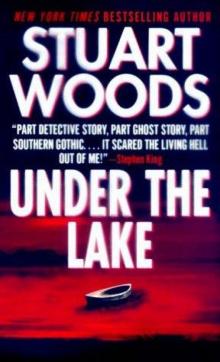 Under the Lake
Under the Lake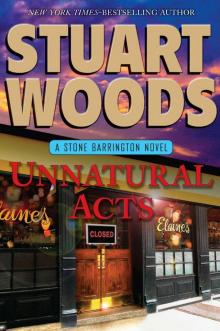 Unnatural acts sb-23
Unnatural acts sb-23 Doing Hard Time
Doing Hard Time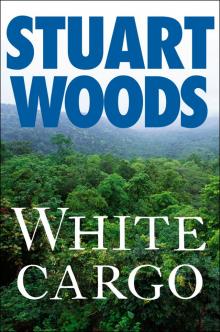 White Cargo
White Cargo The Prince of Beverly Hills
The Prince of Beverly Hills Severe Clear
Severe Clear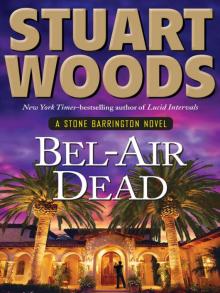 Bel_Air Dead
Bel_Air Dead Severe Clear sb-24
Severe Clear sb-24 Unnatural Acts
Unnatural Acts Dirt
Dirt Foreign Affairs
Foreign Affairs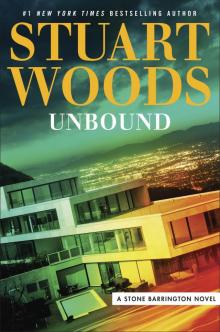 Unbound
Unbound Family Jewels
Family Jewels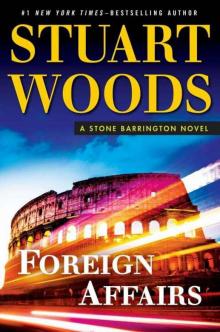 Foreign Affairs (A Stone Barrington Novel)
Foreign Affairs (A Stone Barrington Novel)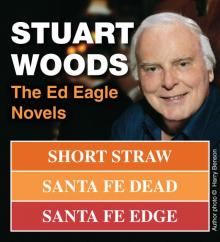 The Ed Eagle Novels
The Ed Eagle Novels Dirty Work
Dirty Work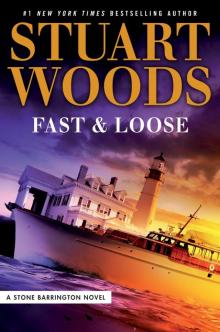 Fast and Loose
Fast and Loose Worst Fears Realized
Worst Fears Realized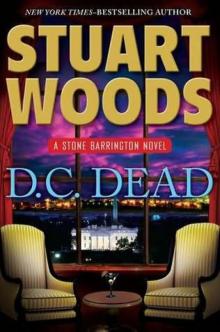 D.C. Dead
D.C. Dead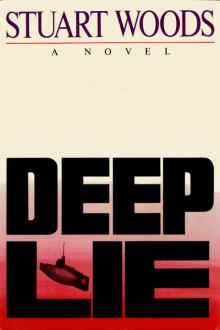 Deep Lie
Deep Lie Santa Fe Edge
Santa Fe Edge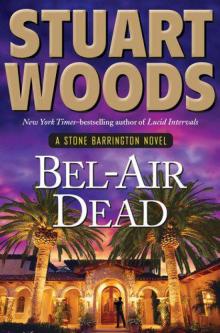 Bel-Air dead sb-20
Bel-Air dead sb-20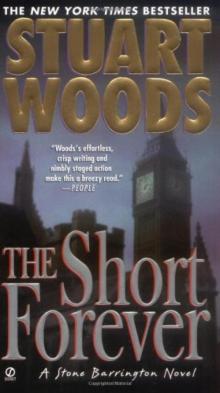 The Short Forever
The Short Forever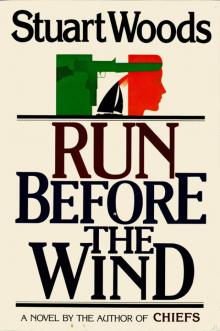 Run Before the Wind
Run Before the Wind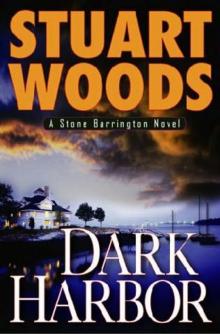 Dark Harbor
Dark Harbor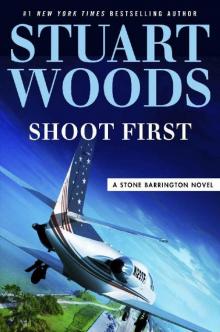 Shoot First (A Stone Barrington Novel)
Shoot First (A Stone Barrington Novel) Sex, Lies & Serious Money
Sex, Lies & Serious Money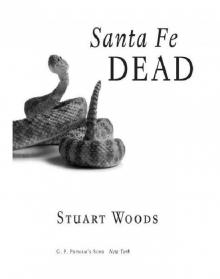 Santa Fe Dead 03
Santa Fe Dead 03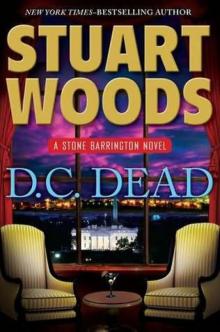 D.C. Dead sb-22
D.C. Dead sb-22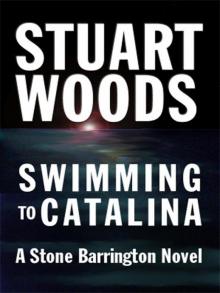 Swimming to Catalina
Swimming to Catalina Collateral Damage
Collateral Damage Hot Mahogany
Hot Mahogany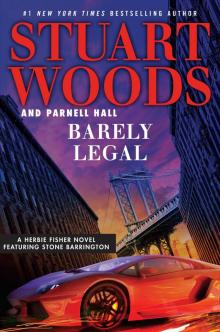 Barely Legal
Barely Legal Imperfect Strangers
Imperfect Strangers Paris Match
Paris Match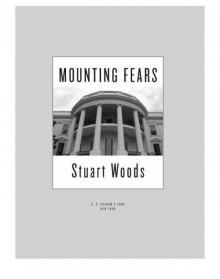 Mounting Fears
Mounting Fears Mounting Fears wl-7
Mounting Fears wl-7 Shoot Him If He Runs
Shoot Him If He Runs Short Straw
Short Straw Santa Fe Dead
Santa Fe Dead Dead in the Water
Dead in the Water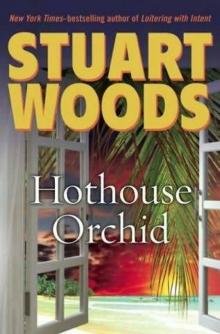 Hothouse Orchid
Hothouse Orchid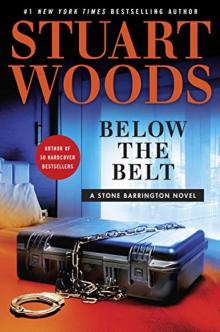 Below the Belt
Below the Belt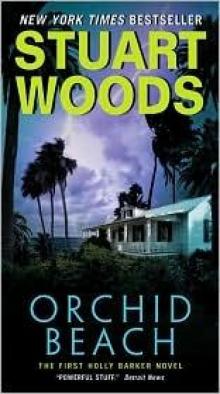 Orchid Beach hb-1
Orchid Beach hb-1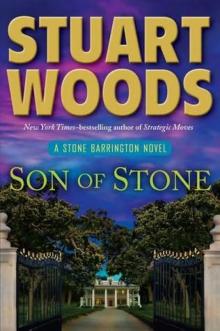 Son of Stone sb-21
Son of Stone sb-21 Cold Paradise 07
Cold Paradise 07 Blood Orchid
Blood Orchid Fresh Disasters
Fresh Disasters Lucid Intervals
Lucid Intervals Dishonorable Intentions
Dishonorable Intentions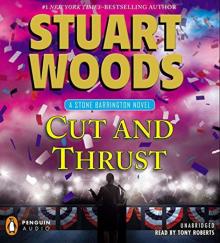 Cut and Thrust
Cut and Thrust The Money Shot
The Money Shot Santa Fe Rules
Santa Fe Rules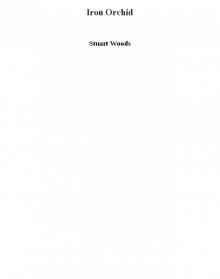 Iron Orchid
Iron Orchid New York Dead
New York Dead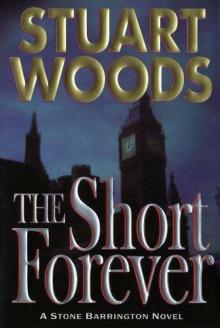 The Short Forever sb-8
The Short Forever sb-8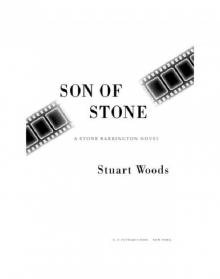 Son of Stone
Son of Stone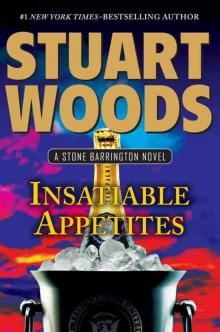 Insatiable Appetites
Insatiable Appetites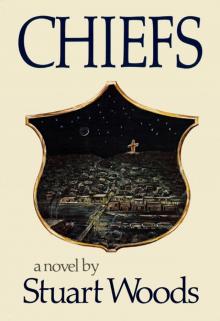 Chiefs
Chiefs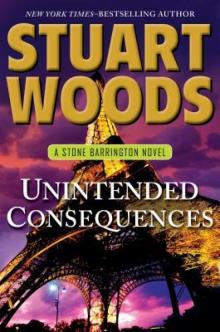 Unintended Consequences
Unintended Consequences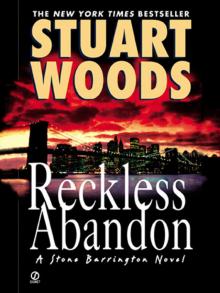 Reckless Abandon
Reckless Abandon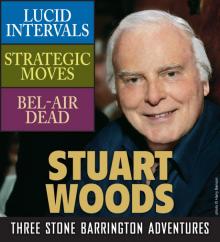 Three Stone Barrington Adventures
Three Stone Barrington Adventures Stuart Woods 6 Stone Barrington Novels
Stuart Woods 6 Stone Barrington Novels Shoot First
Shoot First Indecent Exposure
Indecent Exposure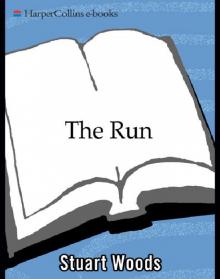 The Run
The Run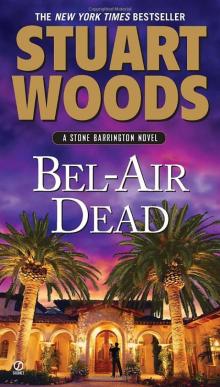 Bel-Air Dead
Bel-Air Dead Strategic Moves
Strategic Moves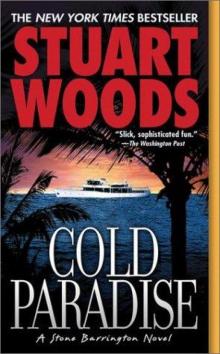 Cold Paradise
Cold Paradise